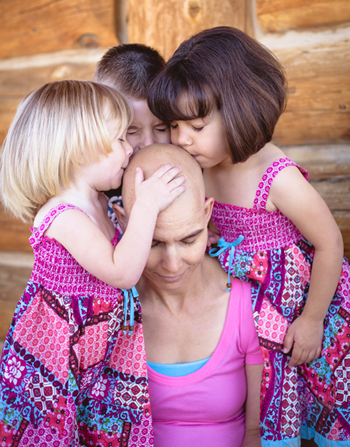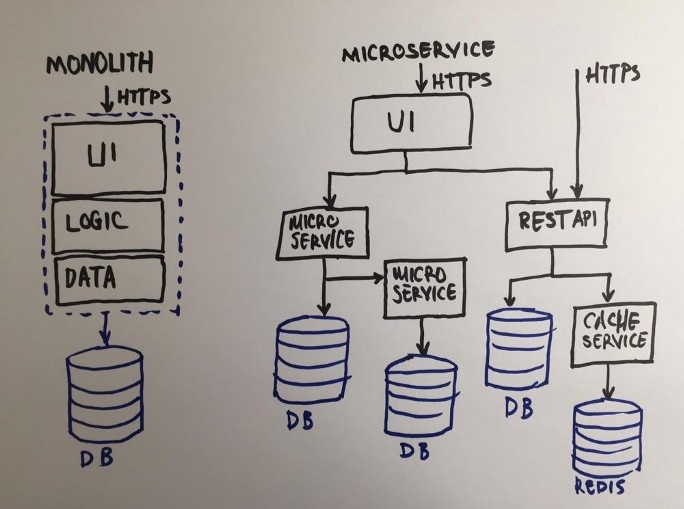Milk from teeth: a change of profession for cells

How many cells are in the human body? Some sources believe that there are about 100 trillion of them, while others – 37.2. Whoever is right, any of these options are amazing. Cells in the body of any living creature perform a variety of functions, depending on their place of origin. Nerve cells, i.e. neurons work like mini-computers that collect, store, process and transmit information through electrical and chemical reactions. Red blood cells, i.e. red blood cells transport vital oxygen throughout the body. The list can be continued, but the essence is simple – each cell has its own clear specification, program, so to speak, which it will follow its entire existence. Or is it not so? Scientists from the University of Zurich (Switzerland) found that the dental epithelial stem cells of mice are able to change their profession under the influence of external factors and retrain into mammary gland cells. How exactly did the scientists manage to find out how complicated the procedure for changing the cellular specification is and how significant is this discovery for treating patients with breast cancer? We will find answers to these questions in the report of the research group. Go.
Study basis
What is common between skin and teeth? There is a hypothesis that teeth, like sebaceous, mammary and sweat glands, hair and nails, are ectodermal appendages. All these derived elements (appendages) have their own unique structure, developing as a result of continuous molecular cross-links between the epithelium and mesenchyme *.
Mesenchyme * – a set of cells that have similar morphological features at a certain stage of intrauterine development, but subsequently these cells will belong to different groups according to cell differentiation, i.e. have different functions.
At the early stages of the development of the organism, all these organs, therefore, their cells, have very similar features, but at the later stages of development, molecular reorganization determines their career. Changes in the expression of regulatory molecules can lead to the fact that a cell developing in one line will change it dramatically.
Another common aspect for all ectodermal organs is the presence of a stem cell population that can generate various types of cells necessary for homeostasis and regeneration throughout the life cycle.
Recent experiments have allowed the identification of various populations of epithelial stem cells by tracking the genetic line in organs such as hair, mammary glands and teeth.
Speaking specifically about teeth, then, unfortunately, they do not regenerate in a person, they do not grow back and are not updated (to the delight of private dentists). But in rodents, the incisors grow constantly. At the posterior ends of the incisors of mice were found multipotent * dental epithelial stem cells (DESC – dental epithelial stem cell) that express the stem cell markers Gli1, Bmi1 and Sox2.
Multipotent * stem cells spawn cells of different tissues, but the diversity of their species is limited to the limits of one germinal leaf.
It is logical that these stem cells can generate all dental epithelial cells. But can they create something else?
Researchers recall that in order to identify epithelial stem cells and assess their plasticity during tissue regeneration, laboratory analysis is most often used by the method of cell transplantation, and the mammary glands are ideally suited as an object of analysis. During the study of breast regeneration, epithelial fragments obtained from it or disaggregated (divided into parts) epithelial cells are transplanted into non-epithelial mammary mesenchyme, i.e. into the fat lining, to generate functional ductal epithelial structures. In other words, the cells of the young gland turn the fat lining cells into their own kind, endowing them with their functions.
But this classic analysis is based on the use of functioning mammary gland cells and non-functioning cells, again, mammary gland. In the study we are considering today, scientists went further and decided to carry out the so-called chimeric cell recombination using dental epithelial stem cells (DESC).
Similar experiments have already been conducted previously using neurons, bone marrow cells, ovaries, and even cancer cells. However, the results were not the most encouraging. The fact is that these non-mammary epithelial cells did not grow in the structure of the breast without the support of breast epithelial cells (MEC – mammary epithelial cell) In addition, the resulting cells could not generate milk ducts. Simply put, these cells became breast cells, but not functional.
But scientists from Zurich in their work managed to achieve a previously unprecedented one – to force dental epithelial stem cells to generate non-dental cell lines. Consider how they succeeded.
Research results
As in classical laboratory studies, the method of breast regeneration was used in this work to assess the plasticity of DESC cells, as well as their ability to generate breast epithelial cells after transplantation into fatty deposits (1A)

Image No. 1
DESC expressing markers of both epithelial and stem cells (1B) were obtained from cervical loop * incisor teeth using green fluorescent protein (GFP) for identification.
Cervical loop * – The area on the enamel organ in the developing tooth, where the external and internal enamel epitheliums are connected.
The resulting DESCs were mixed with primary breast epithelial cells (MECs) and introduced into non-epithelial fatty pads of the mammary gland of mice immunocompromised with the RAG1 gene (recombination activating gene).
Cell lines obtained from these two cell populations were determined by expression of GFP for DESC and lentivirus-induced expression of the fluorescent protein DsRed for MEC.
As a control group, mice were used that received injections of only MEC cells.
8 weeks after transplantation (1C–1I) and on 16.5 days of pregnancy (1J and 1K) in the mammary glands, DESC and MEC cells formed chimeric duct structures consisting of GFP-positive cells derived from DESC and DsRed-positive MEC cells.
Further, the scientists decided to conduct a more detailed analysis of the distribution of transplanted DESC in developing chimeric ducts. For this, double immunofluorescence staining was performed for GFP and keratin 14 (Krt14), which are markers of basal / myoepithelial cells in the adult mammary gland.

Image No. 2
GFP-positive cells were observed as in Krt14-positive myoepithelial *and in Krt14-negative luminal * compartments * (2C–2K)
Myoepithelial cells * – Express proteins characteristic of ectodermal epithelium and smooth muscle cells. This type of cell surrounds the secretory sections and excretory ducts of the mammary, salivary, lacrimal and sweat glands.
Luminal cells * – line the apical (apical) surface of the normal milk duct and have secretory properties. Most types of breast cancer arise from luminal cells.
Compartment * – the space inside the cell, surrounded by a membrane and associated with the performance of a specific cellular function.
Of all the epithelial compartments of the chimeric ducts of the mammary gland, about 20% of the cells were descended from DESC. Scientists remind us that the luminal epithelium of the mammary gland is a very complex structure from various cell populations that can be classified into two groups: ductal and alveolar.
Ductal cells line the epithelial ducts. Among these cells, there are those that express alpha estrogen receptors. They are responsible for the activation of paracrine signaling (regarding the connection of cells in a particular organ), necessary for lengthening the epithelium of the mammary gland when exposed to pubertal estrogens.
Alveolar cells, in turn, are the basis of milk-secreting alveolar processes that occur during late pregnancy.
Double immunofluorescence for GFP (green fluorescent protein) and ER (estrogen receptor) in chimeric epithelium showed that GFP-positive cells can produce both ER-positive and ER-negative luminal cells (2L–2N)
The ability of GFP-positive cells to induce the formation of luminal cells was further confirmed by double immunofluorescence staining for GFP and keratin 8.
One of the most important observations during immunofluorescence and immunohistochemical analysis was that GFP-positive DESC cells can be transformed into a fully functional β- phenotypecasein* positive alveolar cells producing milk (2O–2R)
Casein* – one of the main proteins in milk (40% in human milk).
At the next stage of the study, scientists decided to check how flexible DESC cells are and whether they are able to reprogram duct regeneration in the absence of breast epithelium.
To do this, a laboratory analysis was performed by the method of cell transplantation, but without the use of breast epithelial cells, when DESC was injected directly into the fat lining (3A)

Image No. 3
Fluorescence analysis of the entire structure (without dissection) revealed the formation of GFP-expressing small branched epithelial structures (3B) Immunofluorescence for GFP and detailed histological analysis showed that these formations arose exclusively due to cells derived from DESC (3E), and the fact that they are surrounded by dense fibrous (connective) tissue (3C and 3D)
The morphology of the cells that make up the rudimentary ducts was quite diverse: from oblate to columnar (3D) For a more detailed analysis of these formations, the distribution of Krt14 and ER was evaluated.
Immunofluorescence analysis showed that these structures consist of both Krt8-expressing luminal cells and Krt14-positive myoepithelial cells (3F and 3G) ER-expressing cells were also found in the epithelium of these ducts, but their expression was significantly lower than in fully developed chimeric epithelial formations of the mammary glands (3H)
Casein expression has also been detected in some ducts originating from embedded DESC (3I) This suggests that the obtained cells are quite capable of initiating differentiation in the direction of milk-producing alveolar cells.
An even more interesting observation was the expression of amelogenin, which is a typical marker of differentiation of ameloblasts (3J) The fact is that these cells belong to the producers of the organic components of tooth enamel. Therefore, it can be assumed that there is at least a partial cellular memory of its origin, despite the change in cell specification.
Unfortunately, some of the created structures were transformed into cystic formations (3K–3M), which are characterized by flattened epithelial cells forming a monolayer (3L and 3M) At this stage of the study, such cystic formations occurred in 80% of cases, but this indicator will decrease during the improvement of the technique.

Image No. 4
During the transplantation of DESC cells, the formation of dense fibrous tissue was quite often observed. Fibrosis was found in some fatty pads of the breast where MEC and DESC were introduced, as well as in all fatty pads when only DESC was introduced (4A and 4B) The non-epithelial tissue surrounding the ducts was composed of a very dense network of collagen fibers, as shown Trichromic Masson staining * (4C and 4D).






